Alien transformed science fiction entertainment forever after its release in theaters in 1979. This space horror masterpiece scared and entertained the audience simultaneously with its relentless tension and dark atmosphere.
This movie, directed by Ridley Scott, follows the crew of a commercial spaceship who encounter a deadly extraterrestrial creature. The film starred Sigourney Weaver as Ellen Ripley, who became an iconic character in movie history.
Alien spawned several sequels and crossover storylines with the Predator franchise. The movie won an Academy Award for Best Visual Effects and is still considered a benchmark of science fiction movies and horror. Many viewers are unaware of the fascinating stories that unfolded behind the cameras.
Though the production faced various challenges and surprising decisions that shaped the final product, here are seven intriguing behind-the-scenes facts about this legendary movie.
Disclaimer: The opinions expressed in this article belong solely to the writer.
7 Behind-the-scenes facts you need to know about Alien
1) The lead character was initially written as a man
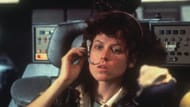
The script of Alien featured a male lead called Ripley. However, the writers Ronald Shusett and Dan O'Bannon created all the characters without particular gender assignments. During pre-production, Alan Ladd Jr., the then-president of 20th Century Fox, suggested turning Ripley into a female character.
This decision was shocking for its time. Major studio films rarely featured women as action heroes in the 1970s. Despite the trend, Sigourney Weaver landed the role and created cinema history. Her acting established a refreshing template for strong female characters in genre films. The gender swap became one of film history's most crucial casting decisions.
2) A comedy film inspired the horror classic
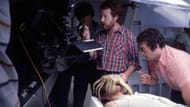
Before writing Alien, Dan O'Bannon worked on Dark Star with John Carpenter. This 1974 science fiction comedy got underwhelming reviews. The poor reception disappointed O'Bannon a lot. He concluded to abandon comedy writing after this experience. O'Bannon believed making viewers scream with terror was easier than making him laugh. This career pivot led directly to the creation of the Alien story.
The writer transformed the disappointment and created something very frightening. Dark Star later gained cult status, but its former failure shaped one of the cinema's biggest horror films.
3) Star Wars made the film possible
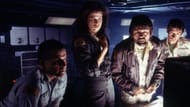
The studio initially rejected the Alien script repeatedly. O'Bannon and Shusett struggled to find backing for their project. The script nearly became a low-budget cinema work with Roger Corman.
Everything changed when Star Wars became a massive hit in 1977. Suddenly, every studio wanted science fiction elements. Twentieth Century Fox very quickly greenlit Alien for production.
The success of George Lucas's space opera opened new horizons for darker science fiction stories. Without Star Wars, viewers might have experienced the terror of the xenomorph. The timing proved accurate for O'Bannon's nightmarish vision. He made sure to add many subtle scenes in the film that kept the audience on the edge of their seat. This horror science fiction turned out to be revolutionary for its time and opened new doors for movies with similar themes.
4) The robot character was added very late
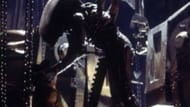
The original Alien script did not initially include the android character Ash. However, later, the producers suggested adding this robotic crew member during development.
Ronald Shusett was sold on the idea immediately. Dan O'Bannon was less enthusiastic about the addition. He questioned whether the character served the requirements of the story.
The twist revealing Ash as a synthetic creature became important to the plot. Ian Holm's acting as the deceptive android added another layer of terror. The robot added a lot of nuance to the story and created more high stakes to the already progressing narrative. Additionally, the cast's involvement with the robot in explosive scenes made for an engaging viewing experience.
This later addition enhanced the movie's corporate betrayal and artificial intelligence themes.
5) The director had a secret cameo
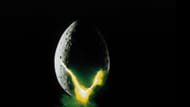
Ridley Scott gave himself a minor but crucial role in Alien. During the sequence where crew members discover the alien eggs, something shifts inside one. Scott provided this movement by flicking his gloved hand under unique lighting. The director wanted to handle this crucial moment personally. His brief appearance helped establish the movie's ominous tone in the beginning.
This hands-on approach demonstrated Scott's attention to detail. Even the minutest moments received his direct involvement. The cameo remains hidden from most fans.
6) The famous chest scene shocked everyone
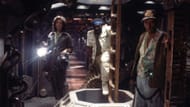
The iconic chestburster scene shocked most of the cast. Although the actors had a hint of something happening during the medical bay scene, Ridley Scott kept the specific details secret from them.
Only a few key actors knew about the gore and blood effects. Sigourney Weaver later recalled seeing crew members wearing raincoats. The cast could not realize that a messy sequence was planned. The genuine shock reactions made the scene even more raw. This surprise element contributed to the horror cinema's most memorable sequence in Alien.
7) Real medical conditions inspired the horror
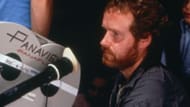
Dan O'Bannon drew inspiration from his personal health struggles. He had Crohn's disease, which affects the digestive system. He was suffering from a lot of discomfort, and one day, he decided to channel this pain into his passion.
The painful symptoms influenced the concept of chestburster in Alien. O'Bannon employed his medical experiences and channeled them into a cinematic terror. The idea of something growing inside a person arose from genuine discomfort. This personal connection made the horror feel more believable and visceral. The writer's pain became the foundation for the movie's most disturbing imagery.
These behind-the-scenes narratives reveal how Alien overcame numerous struggles to become a legendary hit. Creative decisions, personal experiences, and lucky timing shaped this engaging film. The film continues to inspire filmmakers and build terror among the viewers.
